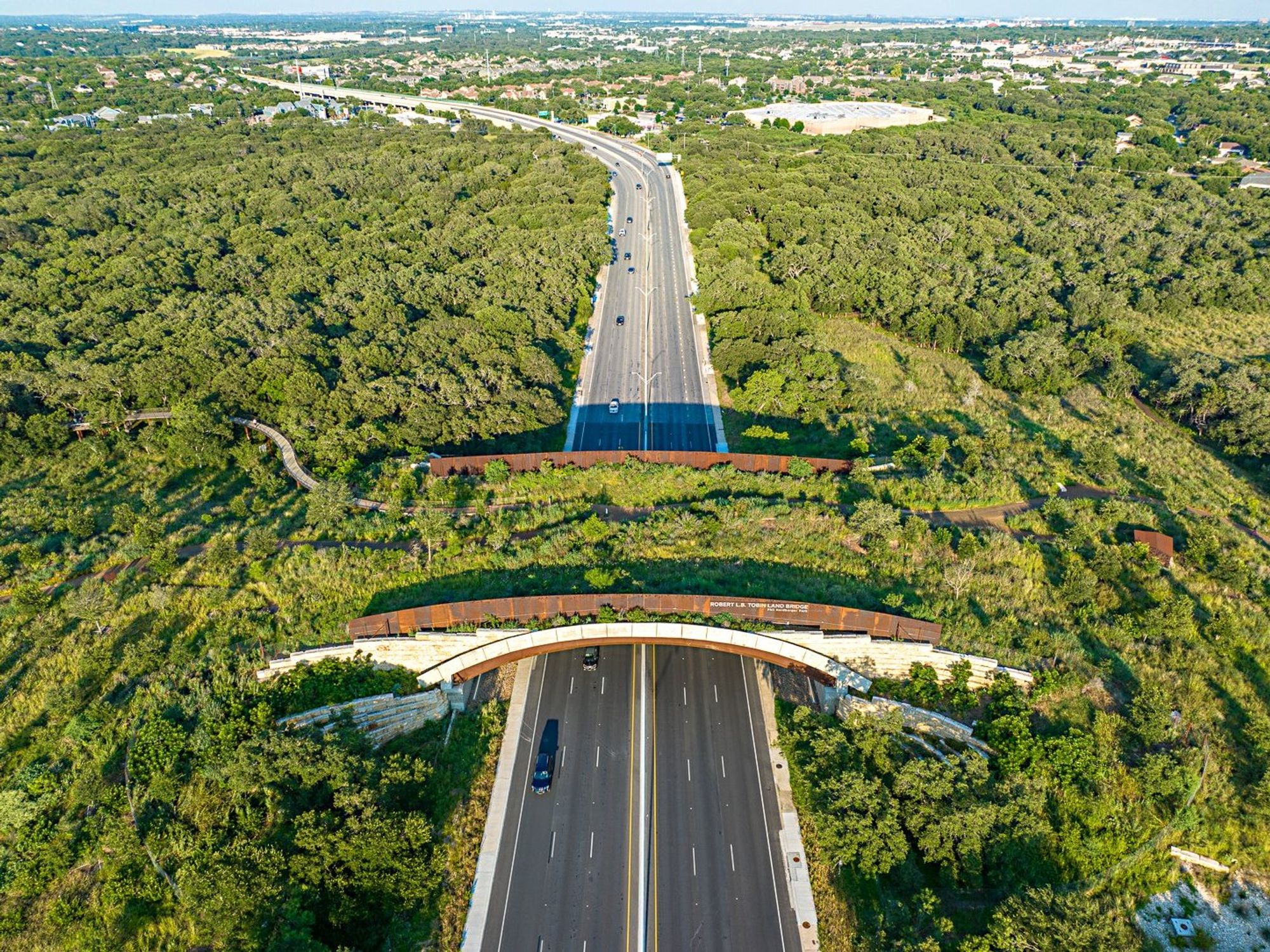BRIDGE TO THE FUTURE
Wildlife advocacy tour treks to San Antonio's spectacular land bridge

The Robert L.B. Tobin Land Bridge will be highlighted in an advocacy tour.
Like many innovations promised by Midcentury America's rush to modernity, the highway system was proposed, plotted, and built with little thought to ecological impact. For wildlife, the shift to private transport was particularly deadly. By some estimates, car collisions kill over a million vertebrate animals daily.
The solution borrows from the transportation playbook, equipping roadways with overpasses and tunnels that connect habitats and allow animals access to resources on the other side of the road. One need not drive very far to witness their impact. Hundreds of deer, possums, and rabbits use San Antonio's Robert L.B. Tobin Land Bridge each day.
The Tobin Land Bridge opened as the United States' largest wildlife crossing in December 2020. In spring of 2021, a spectacular elevated walkway called the Skywalk debuted.
The Northwest San Antonio land bridge is now getting national attention through Wildlife Crossings Across America, a promotional road trip meant to highlight the structure's invaluable role in protecting local ecosystems. The advocacy tour lands in San Antonio on September 17.
The tour is a joint initiative by the National Wildlife Federation's #SaveLACougars Campaign, Big Cat Voices, ARC Solutions, and the Wildlife Crossing Fund. Environmental advocates, photojournalists, and authors will join local officials at each stop to document wildlife crossings at work.
The visits will be blogged on the Save LA Cougars website, and via the Instagram and Facebook accounts devoted to the now-deceased P-22 Mountain Lion. The big cat became the darling of Hollywood when it was first identified in 2012 and the poster puma for the pioneering Wallis Annenberg Wildlife Crossing in Los Angeles.
The hope is to build pressure for more wildlife-friendly infrastructure — initiatives that prevent costly crashes and make cities more adaptable to the climate crisis.
"Saving wildlife amidst a growing biodiversity crisis and rapidly changing climate demands 21st-century solutions," said environmental journalist and author Sharon Guynup, one of the tour's fellows. "Connecting habitat bisected by roadways is key: animals need to move in order to survive."
